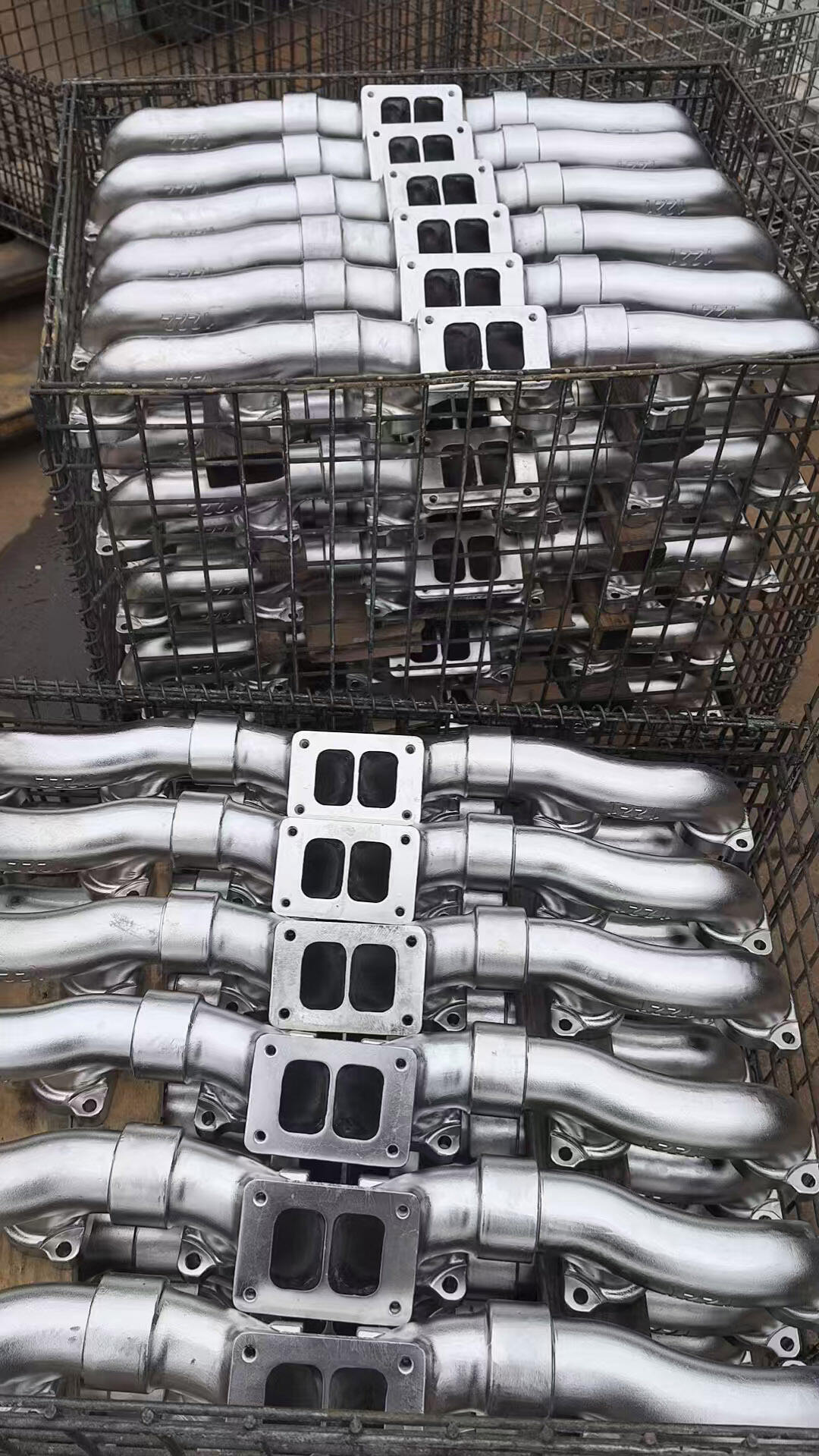Understanding Exhaust Manifold Production Delays: A Guide for Investors
*25+ Years of Expertise in Cast Iron, Ductile Iron, Vermicular Cast Iron,Stainless steel,Heat-resistant steel & Aluminum Manifolds*
For large trucks with exhaust manifold, many suppliers can only complete the casting and machining in sections and finally assemble them through the baking process,this will reduce the service life of the manifold. We have successfully designed and developed the overall exhaust manifold,It can fully exert the mechanical performance of the engine and have a longer service life,Dandong Pengxin is the only one that has been able to do so until now.
Why Exhaust Manifold Orders Take Longer Than Expected
Producing high-quality exhaust manifolds involves complex engineering and meticulous processes. With over 120 types of intake and exhaust manifolds developed for global clients, we’ve identified three critical phases that often cause delivery delays—drawing preparation, pattern/sample development, and initial production. Here’s what investors must know before placing orders in China.
1. Drawing Preparation: The Foundation of Precision
Challenge: Many investors provide physical samples without technical drawings, requiring reverse engineering.
Our Solution:
3D Scanning & Drafting: Our professional engineers use advanced scanners to convert samples into 2D/3D drawings (7–10 days).
Design Approval: Drawings are shared for confirmation before tooling begins.
Key Insight: Skipping this step risks mismatched specifications and costly rework.
2. Pattern & Sample Development: Where Time Invested Pays Off
A. Metal Pattern Production
Complexity: Exhaust manifolds often require 3–5 sets of metal patterns (vs. 1 set for simpler castings).
Lead Time: 35–40 days for multi-cavity patterns; 25–30 days for simpler designs.
B. Sand Molding Challenges
Capacity Constraints: Each pattern requires dedicated molding machines. Limited availability may delay sand shell/core production.
Defect Resolution: Samples are inspected for shrinkage, trachoma, or dimensional inaccuracies. Iterative pattern adjustments add time.
C. Fixture Verification
Fixtures are designed based on drawings but must be tested with physical samples. Complex designs may require on-site technician input.
Why It Matters: Rushing this phase leads to chronic quality issues. Experienced foundries (like ours) optimize gating systems and defect prevention—yet delays remain inevitable.
3. Initial Orders & Batch Production: Scaling Responsibly
Early-Stage Hurdles:
Sand Core Venting: Trapped air in large cores can defect castings. Solutions require process tweaks (e.g., vent design, pouring techniques).
Machine Allocation: One manifold order may occupy 2–3 molding machines. Our 16-machine facility prioritizes urgent orders and collaborates with partner foundries for auxiliary cores.
Post-Initial Production: Subsequent batches proceed faster once tooling and processes are validated.
How Investors Can Mitigate Delays
Plan Realistic Timelines
Allocate 8–12 weeks for pattern/sample development.Compressing this risks quality failures.
Prioritize Initial Orders
First batches take 20–30% longer due to process fine-tuning. Post-approval, lead times stabilize.
Consider Strategic Stocking
Maintain inventory at your supplier’s foundry or warehouse to buffer against demand surges.
Choose Expertise Over Cost Alone
Few Chinese foundries master manifold-specific challenges (e.g., thermal fatigue, thin-wall casting). Our track record includes:
Vermicular iron manifolds with zero porosity.
Aluminum manifolds for hybrid/electric range extenders.
Partner with a Proven Manufacturer
Dandong City Pengxin Machinery combines 25+ years of metallurgical expertise with a problem-solving mindset. We transparently communicate delays because quality cannot be rushed.
Next Steps for Investors:
Share samples or drawings for a free feasibility assessment.
Discuss stocking programs for high-volume orders.
Contact us today to align expectations and build a resilient supply chain.
